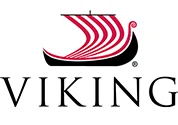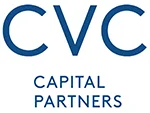| Curtis Sparrer |
On the heels of a strong 2020, which saw new all-time highs for the Dow Jones and the S&P 500, the stock market of 2021 also appears poised to set new records. Among the events driving last year’s market were more than 300 IPOs on the NASDAQ, which raised more than $80 billion in capital. What’s more, the IPO market shows no signs of slowing. During the first quarter of 2021 alone, more than 100 companies went public, and a variety of technology and consumer firms are slated to enter the public markets as this year goes on.
For PR professionals working for companies that are ready to go public, the times before, during and after an IPO can mean lots of excitement and lots of work, as well as a great opportunity to collaborate with one’s peers in investor relations. Having led numerous clients through IPOs, my company’s team has compiled a number of best practices around communicating to target audiences—including banks/analysts, investors and the media—that can help articulate a company’s unique value proposition while making the process of launching into the public markets smoother and more efficient. Following are some key recommendations that will help make the most of an IPO, ideally driving a richer company valuation.
Prior to the IPO
During the several months leading up to an IPO, PR and IR teams should begin to plan communications strategy and establish a roadmap for execution. This includes taking an assessment of staffing/personnel needs and evaluating when and where outside resources, including PR agencies and investor relations professionals, may need to be brought in to handle the additional workload. This is an important first step, because the regular flow of PR work must continue throughout the IPO process, and spreading resources too thin should be avoided.
| This article is featured in O'Dwyer's May '21 PR Firm Rankings Magazine (view PDF version) |
Success metrics
Building a communications campaign around an IPO not only requires a solid understanding of the necessary resources and expertise to handle the work, it also requires an understanding of key metrics for success. Well in advance of an eventual IPO, companies should look at key awareness metrics in order to establish a baseline around company awareness and perceptions with key analysts, influencers and investors. This research can be done in the form of media analysis, review of analyst reports and original research like phone and email surveys of relevant audiences, including potential investors.
With such data in hand, PR/IR teams can plan their pre- and post-IPO communications strategy. In this phase, aligning on what success looks like, in terms of awareness among key stakeholders, becomes central to the exercise of planning. Firms should ask themselves what specific communications deliverables will constitute a measurable track record of success to excite and entice investors and the market. This examination will help to clearly establish collective benchmarks that help position the firm going public as a “company to watch” with a strong financial future and leaders who are visionaries in their field. For example, in many cases when companies go public, new board members or executive hires will be added for their specific expertise. This presents a meaningful opportunity to highlight this additional expertise and raise awareness with key investor audiences.
Messaging
Once broad metrics are established, teams should work together to develop effective messages. These messages should drive communications throughout the IPO process, focusing on the company’s track record and unique story. PR and IR should develop a clear and concise corporate narrative that states the company’s positives, while also addressing company risks head-on and simultaneously remaining sensitive to any potential financial disclosures.
Collaboration
PR and IR teams should also meet regularly, taking a collaborative approach to all stakeholder communications. This includes creating alignment around all recommendations that cover media outreach, as well as documents like press releases, fact sheets and investor FAQs. It should also extend to meetings and other activities; for example, the PR team should sit in on investor calls. And, similarly, the IR team should participate in meetings with reporters at agreed-upon outlets. This helps to ensure that everyone is working with the same set of facts and is knowledgeable about interactions with investors and key media, thereby reducing chances of miscommunication.
In addition, a collaborative PR and IR team should develop a system for routing incoming investor and media inquiries and create a plan to manage both those inquiries and ongoing relationships. This includes making a determination around owners of each contact at key financial publications, at the beginning of the engagement, in order to maximize return on outreach and to most effectively leverage media relationships. In addition, the PR and IR teams should share program calendars covering all relevant initiatives, thereby enabling them to map out opportunities for collaboration and cross-pollination.
Post-IPO
After the IPO has launched, companies should maintain this type of collaboration. Robust financial communications programs should regularly create and refine themes and messages for investors and the market, looping in IR and the office of the CFO. Cross-functional teams should manage the quarterly financial reporting process, including having a plan for post-earnings media outreach each quarter. Best practices should also include a programmatic review of forward-looking financial guidance and being aware of any material events that must be reported to the SEC, which are often announced via press release and must be timed in concert with other news.
On an ongoing basis, the PR and IR functions should coordinate select top-tier media briefings that are taking place around investor events like conferences and road shows. Keeping top-tier media informed has the effect of supplementing other tools, including press releases, bylined articles and op-eds, as well as social media updates and investor communication. All of these tools are useful in providing ongoing “air cover” for an integrated PR and IR effort and should be integrated into larger communications programs. Finally, cross-functional teams should prepare for the annual reporting cycle and combine resources to create content for the published annual report, which will usually integrate financial information and various marketing assets.
Wrapping up
Given the speed and volume of corporate IPOs, PR people should be prepared for “liquidity events” as part of their professional repertoire. Each IPO represents a significant opportunity for cross-team collaboration and serves as a venue for employment of best practices like those outlined above. Doing so will help deliver communications results that ultimately burnish a company’s image while enhancing shareholder value.
***
Curtis Sparrer is Co-Founder and Principal at Bospar.


 Edelman handles Viking Holdings, the river and ocean luxury cruise line that plans to raise $1B via an IPO priced in the $21 to $25 per share range.
Edelman handles Viking Holdings, the river and ocean luxury cruise line that plans to raise $1B via an IPO priced in the $21 to $25 per share range. Teneo is handling the initial public offering of CVC Capital Partners, one of Europe’s largest private equity firms with nearly $200B in assets under management.
Teneo is handling the initial public offering of CVC Capital Partners, one of Europe’s largest private equity firms with nearly $200B in assets under management. Brunswick Group represents Endeavor Group Holdings as it agrees to go private via its acquisition by Silver Lake technology investment firm, which is handled by Edelman Smithfield.
Brunswick Group represents Endeavor Group Holdings as it agrees to go private via its acquisition by Silver Lake technology investment firm, which is handled by Edelman Smithfield. Tod Donhauser, a nine-year veteran of Edelman, has joined H/Advisors Abernathy as managing director and head of its San Francisco office.
Tod Donhauser, a nine-year veteran of Edelman, has joined H/Advisors Abernathy as managing director and head of its San Francisco office. Intelligent Group Ltd, a Hong Kong-based financial PR firm, has priced its initial public offering of 1.9M shares at $4, which is the low end of the $4 to $5 range.
Intelligent Group Ltd, a Hong Kong-based financial PR firm, has priced its initial public offering of 1.9M shares at $4, which is the low end of the $4 to $5 range.


 Have a comment? Send it to
Have a comment? Send it to 
No comments have been submitted for this story yet.